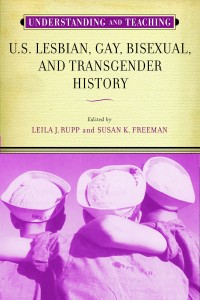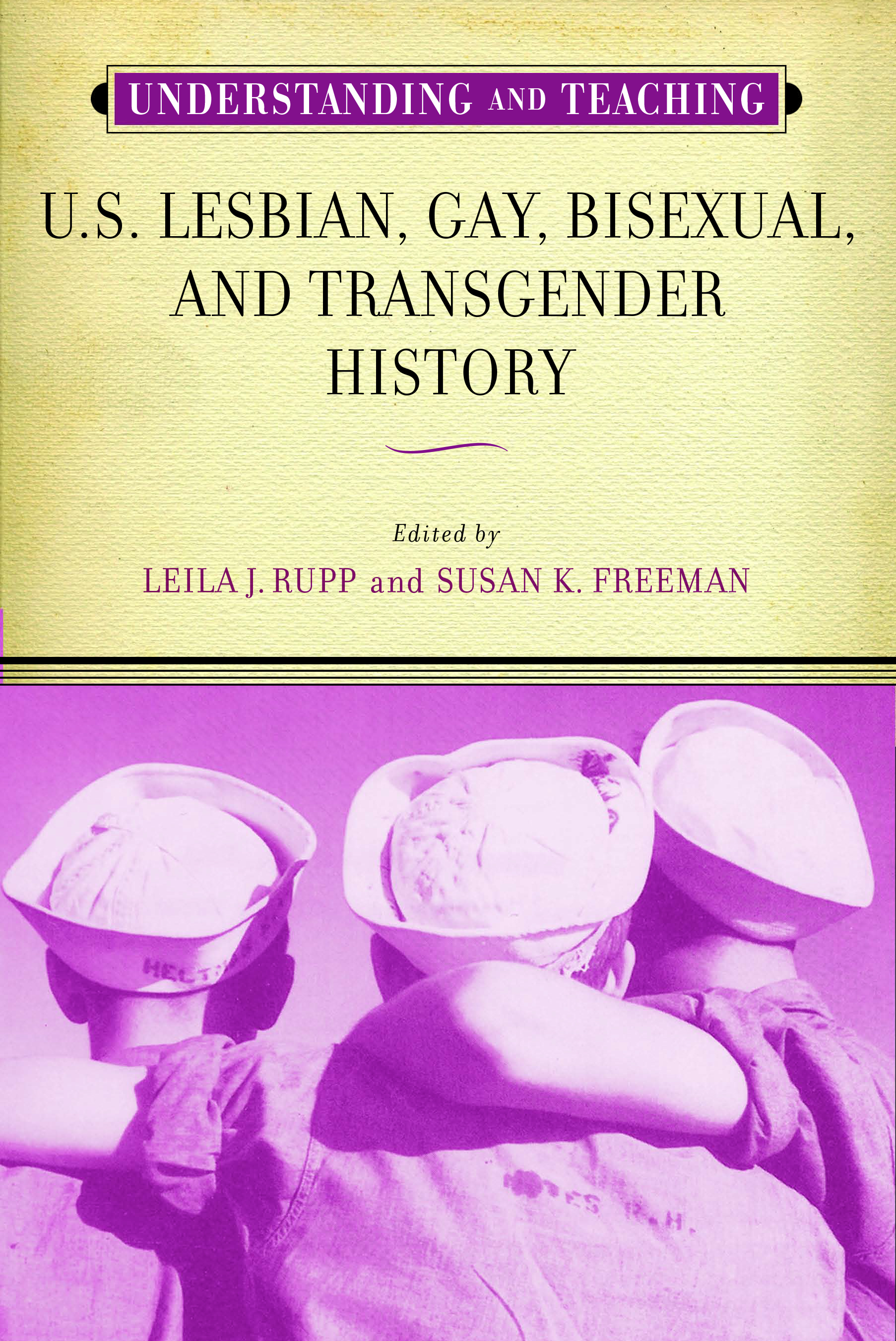 U.S. Lesbian, Gay, Bisexual, and
U.S. Lesbian, Gay, Bisexual, and
Transgender History
Edited by Leila J. Rupp and Susan K. Freeman
University of Wisconsin Press. 383 pages, $29.95
The times, they have a-changed. In 2009, the California state legislature passed SB48, the FAIR (Fair, Accurate, Inclusive, and Responsible) Education Act, mandating the inclusion of LGBT history and culture into high school curricula. But, in this era of testing, testing, and more testing, how do teachers incorporate queer content into their courses—and what exactly should they be teaching to teenagers?
Editors Leila J. Rupp and Susan K. Freeman have facilitated that discussion with their comprehensive anthology, U.S. Lesbian, Gay, Bisexual, and Transgender History. The book features more than 25 essays by teachers and professors about strategies they have used in the classroom and about some of the difficulties that inevitably accompany such subject matter.
Part One, on the challenges of teaching these controversial issues, begins with an essay by John D’Emilio, one of the most distinguished scholars of LGBT history in America. His offering, “Forty Years and Counting,” which provides the long view of queer studies as an academic field going back to the gay liberation era, is an effective and informative look back at where we came from and how we got to this point. D’Emilio notes that “in the 1970s, there was not yet a conversation in LGBT history.” Decades later, he found that even his more sophisticated students still didn’t know anything about their own history: “Their ignorance was not their fault. It was evidence that the queer past does not circulate widely in the everyday lives or the formal education of Americans.”
The book is an antidote to that unfortunate reality. The footnotes point readers to useful sources, little known facts, and classic works in the field. Some authors of those classic works—such as D’Emilio, Marc Stein, and Leila J. Rupp, the volume’s co-editor—are represented here. Part Two, about some specific topics in LGBT history, features Stein’s discussion of how he teaches Supreme Court cases affecting queer lives and issues; both the rulings and the opinions come into play, indicating not only how the court has made decisions but also how its rulings reflect and sometimes change thinking in the broader public. Included in this section are essays about 19th-century lives, about World War II and its impact on queer communities, about 1960s radicalism and the gay civil rights movement, and about AIDS, marriage equality, and the military’s changing policies on gay personnel.
Part Three considers “hidden history” and its rediscovery, using oral history, fiction, media, and popular culture for teaching purposes. The work of Vito Russo in particular plays a key role in this section, as does Jonathan Ned Katz’ great on-line resource, Outhistory.org. Sharon Ullman, a professor at Bryn Mawr College, ends her essay “Popular Culture: Using Television, Film, and the Media to Explore LGBT History” with a provocative question that she poses for her students: “As a final exercise on the use of popular culture, we might all ask our students what they see today and ask them to imagine what their children might see ‘tomorrow.’”
While the book’s primary audience is teachers and scholars, general readers interested in what kids are learning these days—or could be learning—will find this informative, readable, and educational. As the editors suggest: “What a historical perspective brings is a deeper understanding of why change has happened, and why some things have not changed. Legal, social, political, urban, and cultural history lend multiple dimensions to thinking about the queer past and present, and, in turn, the history of same-sex sexuality and gender queerness expands our understanding of all these facets of history.” We can only hope that learning this material will have an impact on the attitudes of young people, offering insights that they’ll carry with them into adulthood, into voting booths and work places, and back to their families.
_____________________________________________________
Chris Freeman teaches English and gender studies at USC. He is co-editor, with James Berg, of The American Isherwood.






